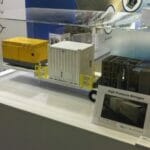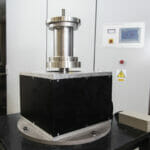~ Why more should be done to tackle the bus driver shortage ~
The UK currently faces a shortage of over 4,000 bus drivers. As the crisis begins to impact services, industry representatives and original equipment manufacturers (OEMs) are sounding the alarm and calling for more to be done. Here, Roger Brereton, head of sales at steering parts supplier Pailton Engineering, weighs in on the debate and argues that there are engineering solutions to improve conditions in the sector.
It is estimated that the UK currently has over 4,000 unfilled vacancies for bus drivers. The problem is so acute that in parts of the Midlands, services are being cancelled or delayed due to the shortages.
Several factors have been blamed for the shortage. Staff retention has always been a problem in an industry where long hours, worker fatigue and uncomfortable working conditions are common. COVID-19 has added to these more longstanding issues. Drivers were literally on the front line throughout the pandemic and for older drivers in particular, the possibility of viral transmission introduced a new risk to their work.
The pandemic also created backlogs in testing and licensing. Just as has been the case for the haulage industry, there is a backlog of testing that needs to be cleared. In June, the DVLA was also struggling to grant provisional licenses in a timely manner due to social distancing regulations at its offices in Swansea.
However, while the haulage industry sets about solving its own driver shortage, it threatens to make the bus driver shortage worse. Many bus drivers are being attracted by the possibility of higher pay and improved working conditions and are therefore leaving the bus cabin to become HGV drivers.
How to support bus drivers
In his Autumn Budget, the Chancellor announced that £1.2 billion would go to bus infrastructure, fare and service improvement. However, as the Confederation of Passenger Transport (CPT) quickly pointed out, that stops short of the £3 billion that was previously promised for the sector.
Without more generous funding, the promise of 4,000 zero emission buses set out in the government’s National Bus Strategy will be impossible to achieve. This point was forcefully made earlier in October, when Alexander Dennis, Switch Mobility and Wrightbus parked their vehicles outside Westminster in protest at the government’s lack of action.
Raising driver pay is a necessary measure for improving staff recruitment and retention, but it is unlikely to be enough by itself. The transport and logistics sector can raise driver salaries more quickly, by simply passing costs onto consumers, so if the bus sector is to stand up to this competition it must pay extra attention to other factors like driver working conditions.
For too long, drivers have had to endure long hours, unhygienic working environments and increased risk of musculoskeletal disorders. Operators must take the lead in addressing some of these problems, but engineering solutions are also available.
Bus manufacturers and the parts suppliers they work with must ensure they consider the needs of drivers. At Pailton Engineering, we have been working on solutions to common driver problems. Our detachable steering wheel concept aims to help improve bus driver safety, providing a more hygienic working environment and reducing the spread of germs and viruses between drivers.
Ergonomic considerations should also be central when designing the bus cabin. As a steering parts supplier, we have focused on tackling this through ergonomic steering wheel design. Our electric memory steering column is designed to automatically adjust to the specific requirements of each driver, thereby lowering the risk of the musculoskeletal problems that are common in the industry.
Solving the current bus driver shortage is not simply a problem that occupies manufacturers and those with a commercial interest in the sector. Improved public transport will be essential in tackling the climate crisis. Even without zero emission buses, a fully loaded double decker bus can take 75 cars off the road. If ever there was a pressing case for urgent action, surely this is it here?
Pailton Engineering supplies steering components for heavy vehicles, including buses. To find out more visit pailton.com.








